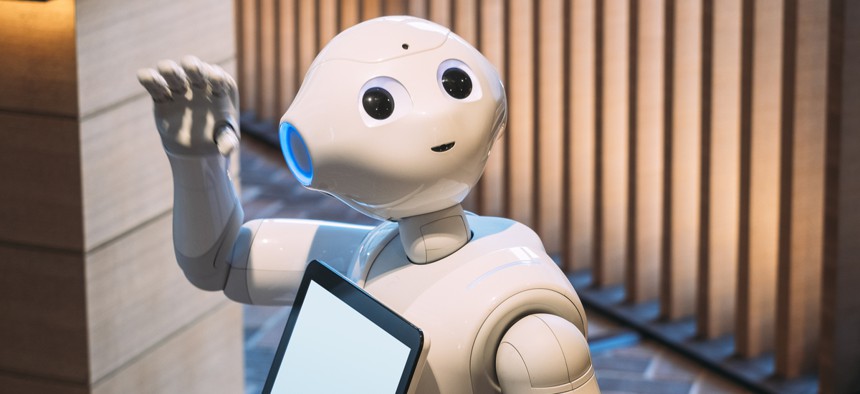Automation Presents Workforce Challenges—and Opportunities

Shutterstock
“Technology will displace workers from some, and potentially many jobs...but we have no reason to think technology will eliminate work in the economy as a whole,” said John Schmitt, vice president of the Economic Policy Institute.
WASHINGTON — Advances in technology will present challenges to the country’s labor workforce—but could also spark great opportunities, a panel of experts said Thursday at the AFL-CIO’s headquarters in the nation’s capital.
“I’m not here to say there aren’t things to worry about,” Michael Chui, a partner at the McKinsey Global Institute, said during the “Future of Work” event. “I actually think the grand challenge of the next couple of decades is not mass unemployment, but mass redeployment.”
The event, held to discuss technological advances in the workplace and how to ensure that workers have a say in the process, featured a handful of experts in the fields of economics and robotics.
As automation creeps into different workplaces, employees commonly fear that their jobs will be rendered obsolete. Ninety percent of respondents in a Quartz survey last year thought that up to half of jobs could be lost to automation within the next five years.
That’s highly unlikely, panelists said Thursday. Existing technologies could already take the place of a high number of existing jobs—but don’t. It can take years to put new technology into practice, and doing so may not always make good business sense, Chui said.
“Automation of existing activities will take decades,” he said, noting that the average time for implementation of those types of technologies is eight to 28 years.
And even if a full 50 percent of jobs were replaced with automation, unemployment would be unlikely to spike dramatically. When one sector of the workplace suffers losses, other sectors will typically grow to make up for it, according to John Schmitt, vice president of the Economic Policy Institute.
“Technology may displace particular jobs, but work itself will not disappear,” he said.
Consider the agricultural sector, Schmitt said. Production there peaked in 1810 at 73.7 percent of the workforce. By the end of the century, just 40 percent of working Americans held agricultural jobs—but across the country, total employment had increased by a factor of 10. That was partly due to new positions in the manufacturing sector, Schmitt said.
“People had to make the machines that were taking jobs in agriculture,” he said. “ Technology will displace workers from some, and potentially many jobs...but we have no reason to think technology will eliminate work in the economy as a whole.”
New jobs are constantly evolving from technological advances, Chui said.
“They’re always being generated,” he said. “Across the bay from where I live in San Francisco, people pay to watch other people professionally play video games. That didn’t exist 10 years ago.”
Thursday’s event served as the kickoff for the AFL-CIO Commission on the Future of Work and Unions, a multi-member panel comprised of union administrators from different sectors of the workforce who will meet periodically over the next year to discuss the responsible integration of technology.
“We’ve always adapted to new workplace realities with pride, with flexibility and with unwavering commitment,” said AFL-CIO President Richard Trumka. “And we aren’t done yet.”
Kate Elizabeth Queram is a Staff Correspondent for Government Executive’s Route Fifty and is based in Washington, D.C.
NEXT STORY: ‘We Have No Bill. We Have No Deal’ to End Arizona Teacher Protests





